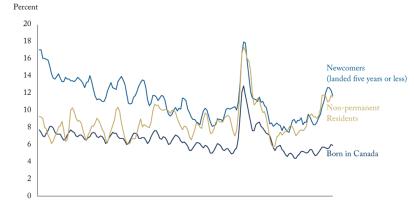In this edition of Graphic Intelligence, we look at which industries are at high and low risk of automation. In the chart below, each circle represents an industry, sized by number of jobs.
You can toggle back and forth between high risk and low risk jobs, and hover over the circles for industry information.
- Show:
Oops! If you are seeing this message, it may be because the chart is not displaying correctly. Try upgrading your browser or enabling Javascript.
A. Jacobs, C.D. Howe Institute | Source: Wyonch and Oschinski (2017)
Industries where more than three-quarters of the jobs are at high risk account for only 1.7 percent of employment (310,000 jobs). This implies that Canada’s diversified economy and labour force are well positioned to adapt to technological change. Occupations high in abstract, complex-decision-making skills with a strong focus on creativity, critical thinking and interpersonal social skills have a relatively low risk of being automated. As well, it is very unlikely that employment in occupations highly susceptible to automation (35 percent of Canada’s employment) will be completely replaced by smart machines over the next few years.
While some industries and occupations will be disrupted more than others, there is no evidence of an imminent threat of massive unemployment among Canadian workers due to automation. So, policy makers: don’t press the panic button.
To read more about how automation will impact Canadian industries, occupations, and workers, read, “Future Shock? The Impact of Automation on Canada’s Labour Market” by Matthias Oschinski and Rosalie Wyonch.




